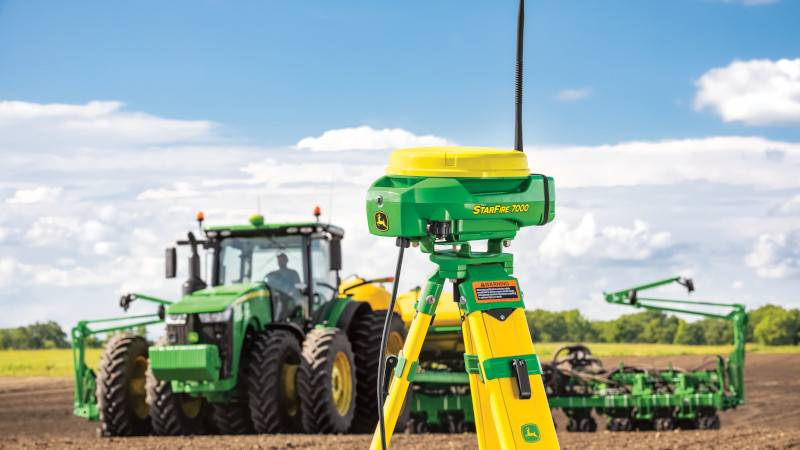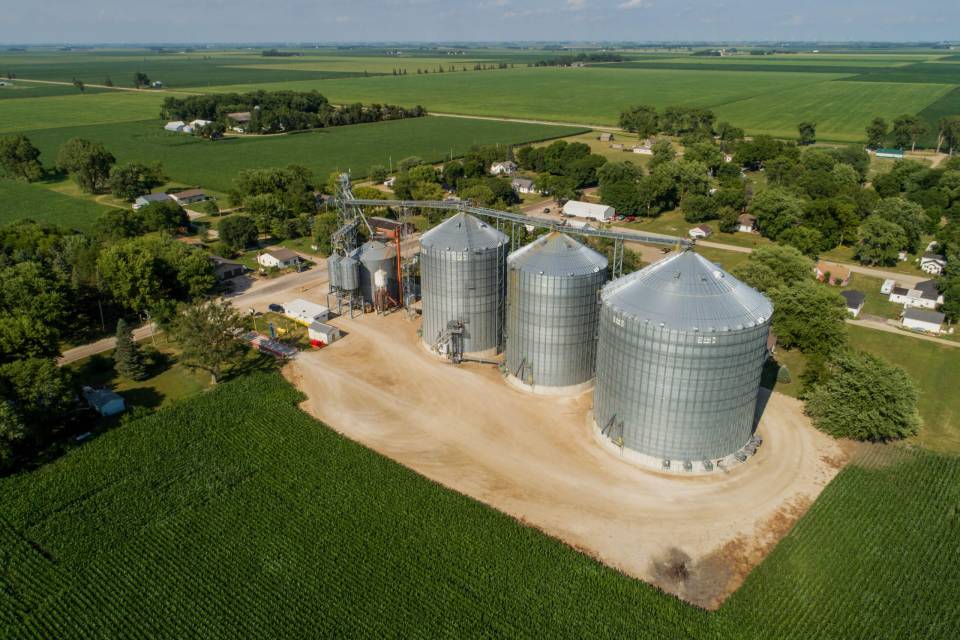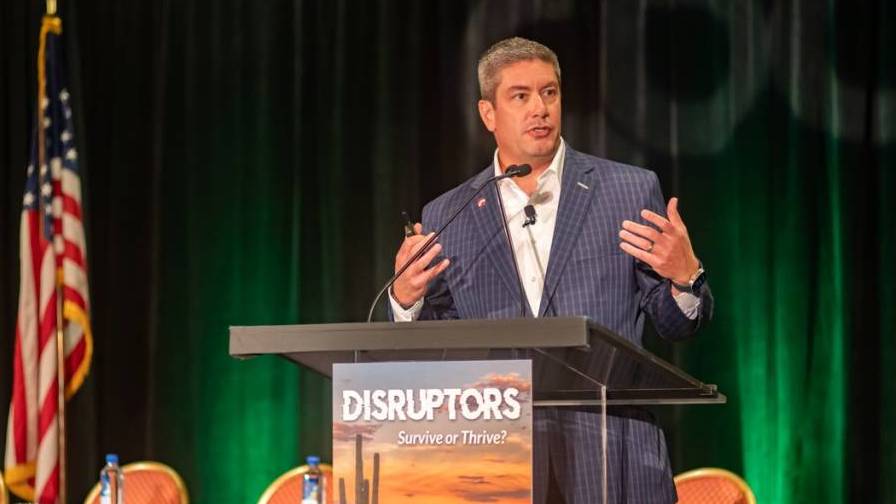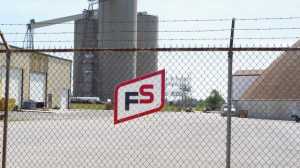GROWMARK In 2015: Back, To The Future
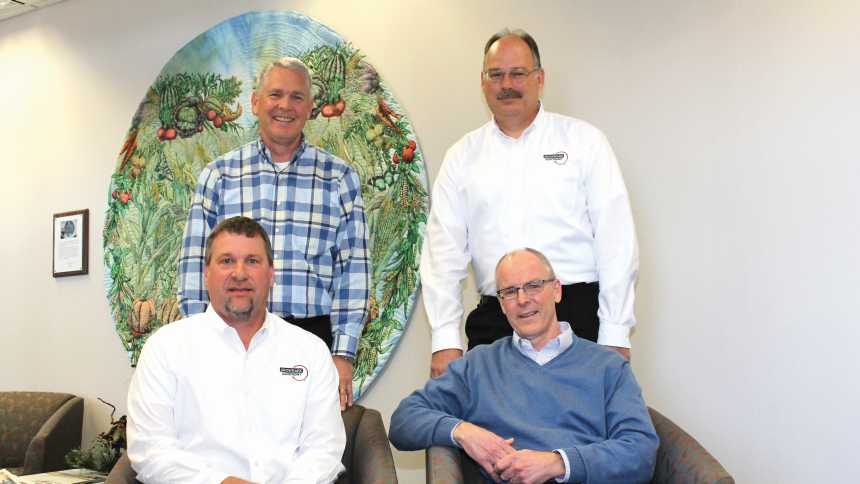
GROWMARK Team: Back Row, from left: Kevin Carroll and Barry Schmidt. Front Row, from left: Mark Orr and Jim Spradlin.
Walking through the entrance to GROWMARK, Inc.’s headquarters in Bloomington, IL, visitors are likely to see many reminders of the company’s past. This includes not only historical pictures and mementos from GROWMARK’s early days dating back to the late 1920s, but a special meeting area called the Davisson Conference Room as well — named in honor of the company’s CEO during the early 2000s.
Moving even deeper into the heart of the building, however, visitors are apt to notice employees hard at work utilizing the latest high-tech tools available, including computers and a host of smartphones. There is also plenty of talking, as managers and their employees share strategies, discuss key challenges and speculate on how GROWMARK should position itself to aid customers during the upcoming growing season.
Given this level of consistency-in-action, a casual observer might assume that GROWMARK has been guided through the years by the exact same management team. But this isn’t the case. In fact, current CEO Jim Spradlin is the third person to hold this title for GROWMARK since the 21st century began.
However, despite these changes at the top, the company has not missed a beat in terms of market growth. Indeed, during 2014, GROWMARK’s total company sales increased 2% to just under $10.4 billion — following a steady pattern of upward growth since the start of the 21st century.
How has GROWMARK accomplished this? According to Spradlin, the key has been an almost single-minded company vision that stretches back over the past few decades.
“We have maintained our focus on what we do best,” he says. “Our CEO during the early 2000s, Bill Davisson, really transformed this organization. It was under his leadership that we became more focused. His successor, Jeffrey Solberg, accelerated that focus. And I want to continue down that path as well.”
This is particularly evident, adds Spradlin, if you consider GROWMARK’s ag retail presence in the marketplace. “We’ve had tremendous growth as a company since the time Bill (Davisson) was our CEO,” he says. “In the early 2000s, GROWMARK operated ag retail outlets in only three states and the province of Ontario in Canada. Today, we conduct business in 43 states and the province of Ontario.”
Besides focusing on the marketplace itself, another key to maintaining GROWMARK’s impressive growth during the past 15 years has centered on current executives remembering what they previously learned — without the aid of a time travel-enhanced DeLorean.
“GROWMARK’s previous leaders were very inclusive with the rest of their management teams, so many of us here now have always felt like we were a big part of what was being accomplished across the whole company,” says Spradlin. “So given this fact, it certainly doesn’t give anyone a big reason to change the courses that have already been set in motion, myself included.”
Still A System
One of the main courses GROWMARK has charted over the years is an all-inclusive approach to its four main business areas — agronomy, energy, grain and the FS member partners. “I’d say the one word that best describes GROWMARK today is ‘system,’” said Davisson in a 2004 interview with CropLife® magazine. “When I look at our organization, I see a complete system dedicated to cooperation. It is our vision to be the best ag cooperative system in North America and that’s what we are trying to achieve.”
Spradlin believes “system” is still a pretty good word to describe GROWMARK in 2015. “‘System’ is as relevant and important to our organization as it ever has been,” he says. “I believe we are even closer to our customers than we were 10 years ago.”
To illustrate this belief, Spradlin points to how GROWMARK has handled risk management, not only for its grower-customers but itself as well. Back during 2008-09, the whole of the agricultural market was dealing with historically high fertilizer prices, which eventually led to a complete market downturn once commodity prices began to fall. As a consequence of this (and plenty of forward buying), many ag retailers were forced to write down millions worth of inventory for the year as grower-customer orders for fall fertilizer application vanished almost overnight.
Since that event, GROWMARK has taken several steps to protect itself from such severe market volatility. Again, the company looked backward before moving forward with this effort, says Spradlin. “Our history says that in tough times, we have been able to use our expertise to help our customers be more profitable and, at the same time, give ourselves an opportunity to grow,” he says. “Four or five years ago, we created a vice president of risk management and oversight position, which is currently held by Wade Mittlestadt. We’ve used his expertise to evaluate and measure the risks we all have to deal with in the market, from GROWMARK’s to those of our customers, using both market intuition and computer modeling. This system approach has helped everyone involved with our organization better manage the risk that comes with doing business in the agricultural marketplace.”
Of course, this system approach has also benefited GROWMARK at the ground level as well. Take logistics, for example. By its own estimates, GROWMARK delivers more than 350 product loads per day to its customers. And this number typically balloons to more than 1,300 loads per day during the peak spring and fall seasons.
In recent years, moving crop inputs across the U.S. has sometimes presented issues for ag retailers, particularly during 2014 when many railcars ended up snowbound in Canada. But according to Kevin Carroll, vice president of energy and logistics for GROWMARK, the company did just fine in this area thanks to its system approach. “We are all working on the same mission, trying to deliver excellence to the customers,” says Carroll. “One of the beauties of the cooperative system, and logistics in particular, is we can move resources around to ensure the product gets to where it needs to be.”
Today’s Agricultural View
As with any larger ag retailer, GROWMARK’s fortunes during the upcoming year will largely be shaped by the performance of the overall agricultural market itself. For the past several years, commodity prices have been robust enough that virtually all crop input and service suppliers have been able to grow their businesses.
But according to Mark Orr, vice president of agronomy, the early read on 2015 is not nearly as strong. “The profitability at the farmgate could be an issue this year, definitely,” says Orr. “We are not saying it’s going to be a bad year, but it just won’t be as good as we’ve seen the market perform for the past few years, which might seem down in comparison.”
Carroll agrees. “We’ve likely got the agricultural community slipping into a downturn right now, although it shouldn’t be too severe,” he says. “At GROWMARK, our challenge will be sustaining our historic growth pattern in this kind of environment.”
At the same time as the overall agricultural market seems to be slowing down, ag retailers are rapidly dealing with a host of in-flux environmental and stewardship issues. Although this has always been the case historically for agriculture, says Barry Schmidt, region vice president, the situation has become more pronounced from the fallout of several high-profile incidents that placed agriculture in the national spotlight. This includes the disaster at the West Fertilizer plant in 2013 and the Lake Erie water crisis in Toledo, OH, during the summer of 2014.
“These kinds of things have placed a focus on crop nutrients, fairly or unfairly,” says Schmidt. “In this kind of atmosphere, a big concern of mine would be losing the ability to apply anhydrous ammonia during the fall season. We are already seeing less fall applied ammonia than ever before. And only being able to apply it during the spring because of new legislative restrictions would be a huge challenge — not only for GROWMARK and its customers, but for everyone in the agricultural business.”
It’s for these reasons, says Schmidt, that GROWMARK is an active participant in such sustainable agricultural programs such the 4Rs (promoting the right fertilizer, at the right rate, at the right time and in the right place) and N-WATCH, which tracks plant-available nitrogen at a specific field location over time. The company has also shared the research of its own Dr. Howard Brown, which uses the acronym M.O.M. (Minimize environmental impact while Optimizing harvest yields and Maximizing nutrient utilization) with the entire agricultural community.
The Need For Technology
Besides these efforts to help cope with all of these and other market-driven challenges, GROWMARK is also once more considering its past before moving into the future, in two key areas of its business in particular. The first of these is technology.
As an organization, GROWMARK has long embraced using new technology in its operations. During the early 2000s, the company added several high-tech systems to its day-to-day operations to help employees keep pace with the array of high-tech products such as GIS systems and wireless communication devices being used by its grower-customers. The company also was an early adopter of precision agriculture devices and methods as well, eventually growing this part of its business into the multi-million dollar operation it is today.
In 2015, says Orr, much of the question of technology use in agriculture centers around the ability to use these kinds of systems to gather data and use it in a meaningful way to help grower-customers boost their yields. To accomplish this, GROWMARK has introduced FS Advanced Information Services (FSAIS). This includes such capabilities as Field Manager (providing boundary data) and Field Environment (looking at weather and other factors that influence crop growth). Still to come are options called Advanced Analytics (crop modeling and big data analysis), Work Flow (service planning with FS employees) and Logistics (offering equipment fleet asset management).
“FSAIS is a suite of tools that will allow our crop sales representatives to work with producers to connect data and conduct the analysis and insights needed to help put together the best recommendation possible to help increase yields and profits,” he says. “Using this program, we can assemble this data into one complete user experience, add insight to it and then help our customers find yield profitability in their operations.”
However, adds Spradlin, even though GROWMARK is helping collect massive amounts of “Big Data” from customers using FSAIS and other new technology options, the organization itself will not lay claim to owning any of it. “We believe that growers own their data, and as such, we will keep it private and secure,” he says. “As a company, we’ve signed on with every policy agreeing with this view such as the Open Ag Data Alliance, and we will always respect that.”
The Need For Workers
The second key area of focus for GROWMARK is employees. More specifically, finding so-called blue chippers in the first place has been a challenge — not only for GROWMARK but virtually every ag retail organization. In fact, when CropLife compiles its list of the biggest challenges facing ag retailers as part of the annual CropLife 100 report, finding and retaining good employees has remained at the top each year going back several decades.
“That’s one of our biggest struggles today, finding good quality individuals to take part in our company and business,” says Schmidt. “It takes quite a bit of effort, knowledge and skill to operate a $200,000 to $300,000 piece of equipment with the technology that is out in the field now. It’s much more complex a job than it was 25 years ago.”
Of course, this quest to find good employees has been a consistent issue for GROWMARK throughout much of its corporate life. That’s why, for more than 50 years, the organization has worked with local colleges and universities to find potential workers. Each summer, approximately 50 to 60 students come to work at the company through its intern program. (In fact, current VP Agronomy Orr started out his GROWMARK career 25 years ago as part of the company’s intern program.)
According to former CEO Solberg, this program offers students interested in agriculture to learn about the overall business while helping GROWMARK accomplish its company goals. “There are fewer and fewer farm kids coming back to the farm these days and many of them are not looking at agriculture as a career,” Solberg told CropLife in a 2011 interview. “We have to show them that we are a successful organization in a successful industry with a great story to tell.”
Today, says Spradlin, the intern program is still an important way to find new workers for GROWMARK. “We end up hiring a significant portion of those interns that take part in the program each year after they graduate,” he says. “That’s been a tremendous source of finding elite talent for us, in the past and right now. Typically, we assess their skills and try to find a job match for them in our organization.”
However, the intern program is only part of GROWMARK’s effort to find new workers for its organization. In addition, there is the GAP (GROWMARK Associate Program), where potential new hires work with established organization employees as their mentor over an 18-month period. There’s also an effort called Exploring Ag. This targets potential workers for the company’s technical operations business areas by recruiting students from technical and junior colleges. A few FS member partners even start looking for potential new hires by tapping their local high schools as well.
But on top of these legacy programs for finding and training employees, Spradlin has added his own effort — one with a definite eye toward the future. “It all starts with people,” he says. “We need to recruit, attract and retain elite talent, so as a company we have launched what we call the Center for Leadership Development. GROWMARK already has an active training program for the development of GROWMARK System employees, but this will be something more than that. It’s an effort to elevate our organization and its employees through a more focused and detailed training program in the areas of leadership, business acumen and marketing, as well as technical areas.”
With these focuses on the areas of technology and employees, GROWMARK’s current management team believes the company has uniquely positioned itself to build upon its past to create a bright future. “Currently, more than 60% of our workforce would be classified as belonging to either Generation X or the Millennials,” says Orr. “I would hope that these workers can improve upon our company’s over 80-year history by setting in motion ideals that will guide us through the next 80 years as well.”
Spradlin agrees. In fact, if he was offered the opportunity to step into a white sports car-shaped time machine and go forward to GROWMARK’s future, he would hope to recognize at least some of the organization’s current training/recruitment structure still in place. “The Center for Leadership Development is a signature event for me,” says Spradlin. “My dream is for this effort to be distinguishable to our organization and a premier way for GROWMARK to develop leadership talent in our employee team for many, many years to come.”

